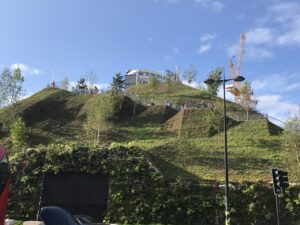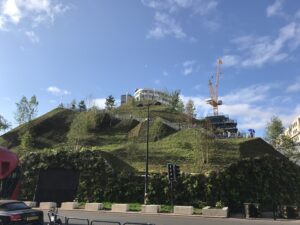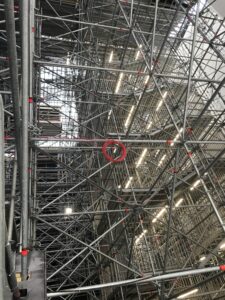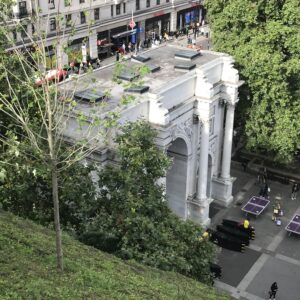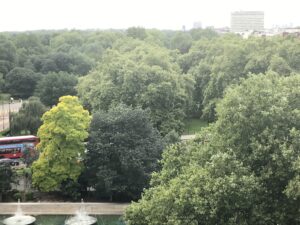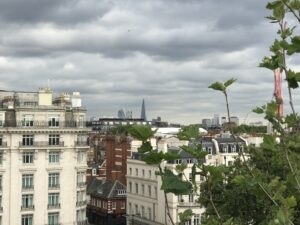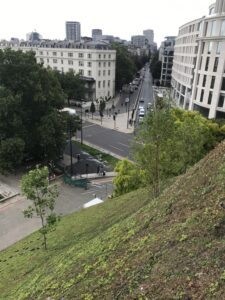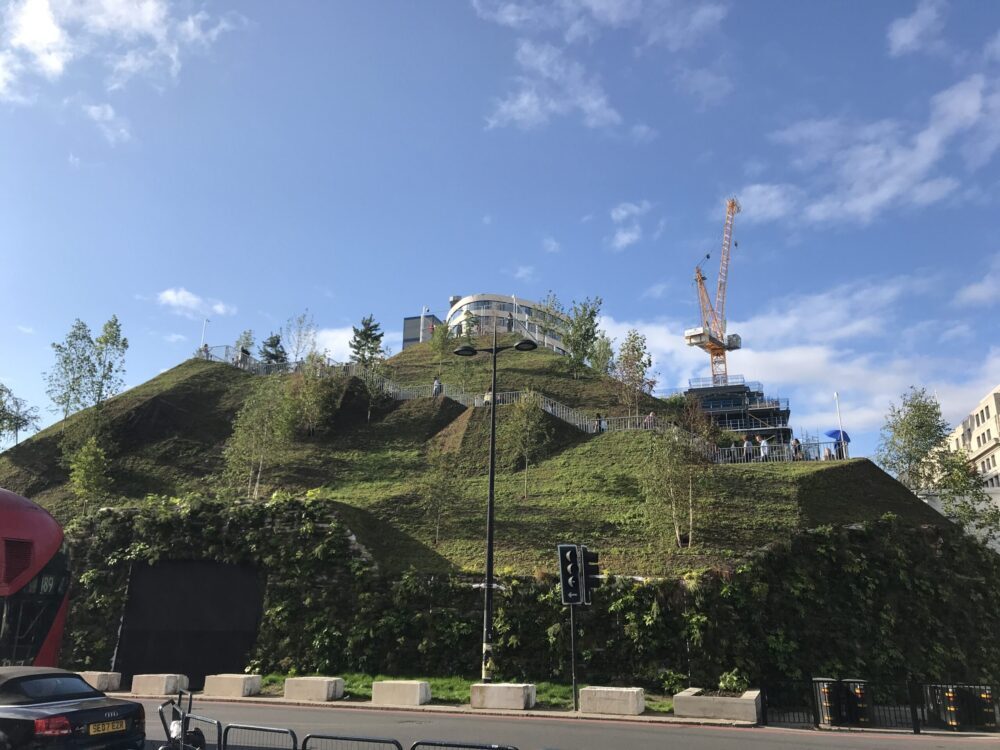
I actually thought it might be a good idea. It was certainly an idea worth exploring, and perhaps wacky/left field enough to work; plant a hill in the centre of the city, with flowers and trees. Bring a spot of the old rus to the very urbe Oxford Street. Give Nash’s poor, lost, isolated Marble Arch a bit of company.
Mind you, I thought it was going to be an actual hill – several thousand tons of soil compacted into a new knoll/tor/hillock. I didn’t think it would be just a web of scaffolding covered in rolls of sedum and sparse saplings. Nor did I know that the budgeted cost was £2 million (with an actual cost of £6 million: Six. Million. Quid).
When it opened last month the Marble Arch Mound was almost universally panned as a visitor ‘experience’, with complaints about the cost of accessing it (£4.50 on a weekday, £5.50 at weekends), about the views, the planting – complaints about the whole top and tail of it in fact.
Whatever the vision, the reality had proved unsatisfactory. Deputy heads rolled; the architects MVRDV have been silent (having presumably trousered a large chunk of Westminster Council’s cash). The ticket-buying public had their money refunded and the council made access free to all throughout August.
As I was in the area on Thursday, I went for a walk up the steel staircase to the top (“because I was there” doesn’t really have the resonance of Mallory does it?). At the entrance there are barriers for controlling the optimistically envisioned queues, but I walked straight in without having to book a timeslot. To be fair, there was a reasonable flow of people going up, but no great crowd. The tens of thousands that it was hoped the Mound would bring into the centre of town have failed to materialise.
You climb the 25 metres (about five floors) to the viewing platform at the top, snap some photos, take in the view, and come back down again. One can see the tip of the Albert Memorial and the museums above the trees in Hyde Park, there is the BT Tower behind you, the Shard and the Eye poke above the buildings to the east. It’s nice enough on a pleasant summer’s evening.
(The way down is the way you came up – behind the screens at the bottom one can catch a glimpse of the planned route down that snakes its way through the scaffolding entrails of the structure. It looks amazing.)
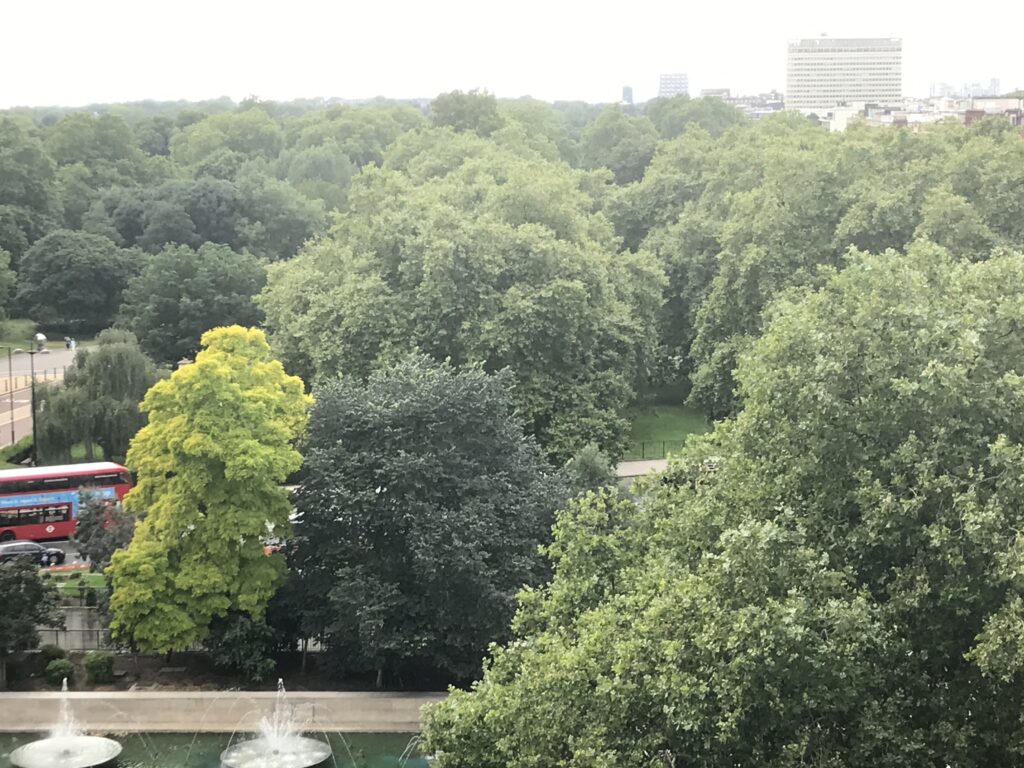
So, worth seeing? Yes, probably. Worth going to see? Almost certainly not. If I’d made a special trip and paid to “climb” it, I’d be pretty annoyed at the time and money I’d wasted, but if you’re nearby, it’s a reasonably diverting way to kill half an hour.
My overriding feeling though was one of disappointment at the ‘near missedness’ of the whole thing. Near the start the planting has flowers and colour which are missing from the rest of the hill (in fact, some of the sedum has died – there are bare patches, or clumps of dandelion). Better planting – grasses and flowers say, like a wildflower meadow – would have made it more visually exciting, and given one more of a sense of nature as one ascended (imagine hearing a thousand bees buzzing, or being able to smell different scents on the way up). The trees are pretty woeful (some have already died) – absolutely nothing like the architects’ render, which is perhaps the most disgraceful aspect of the whole project.
And it’s not tall enough. An extra 10 or 20 metres would have made a huge difference, raising the platform above the level of the Oxford Street and Park Lane buildings and giving a sense of height above the ordinary. A 50m tower wouldn’t have needed an artificial meadow, the views would have been a compelling enough reason to make the climb.
So the Mound isn’t the crashing failure of reports (except, of course, for the council tax payers stumping up £6 million); it’s more of a misfire – not bold enough, not beautiful enough. Had it been either bolder or more beautiful it might have succeed, but there is nothing outstanding about the project.
If you’re near go while it’s free, but “it’s not as bad as you were expecting” is hardly the slogan that is going to pull post-covid visitors back into central London.
